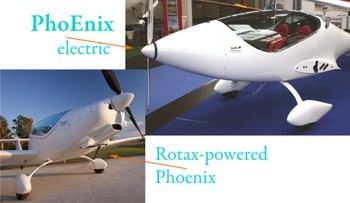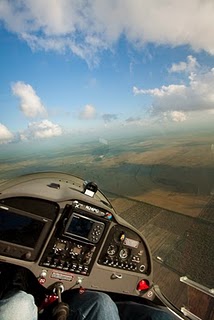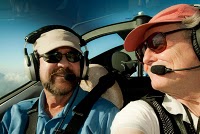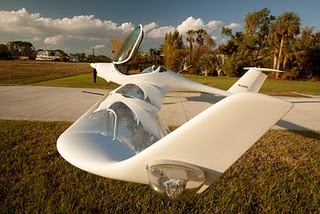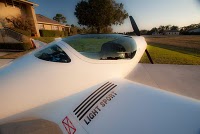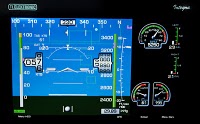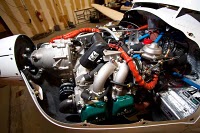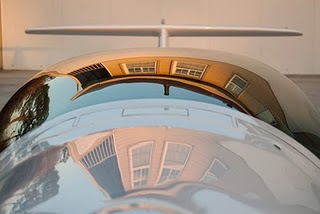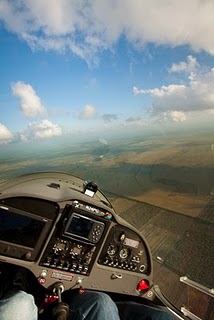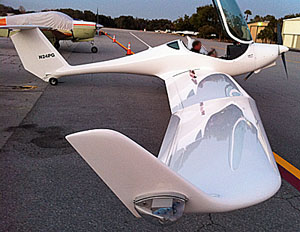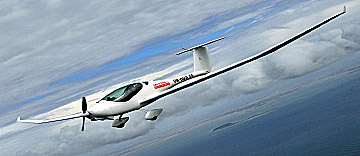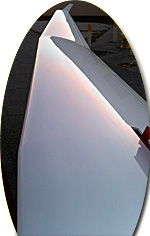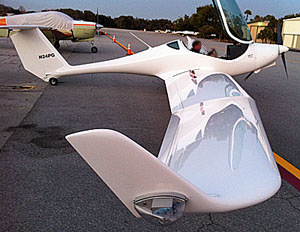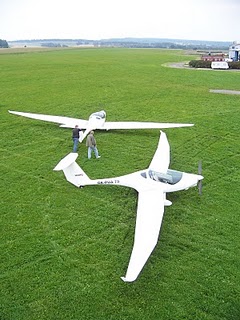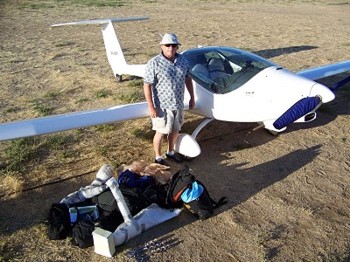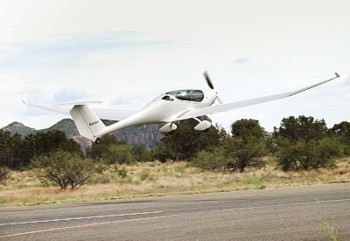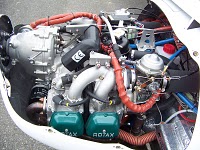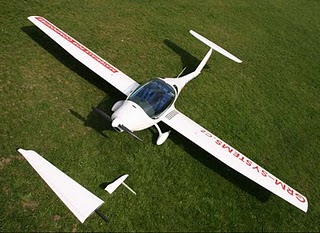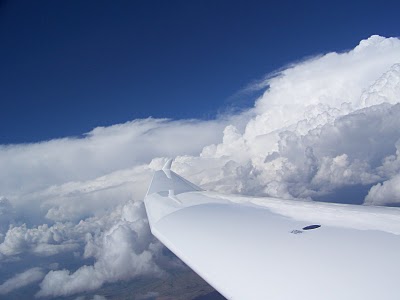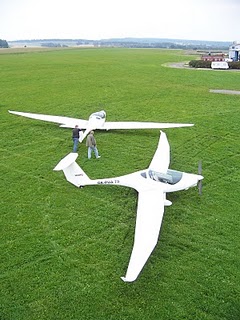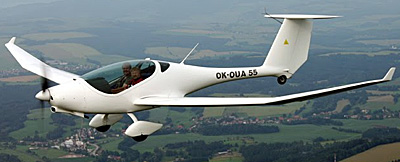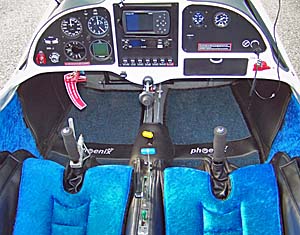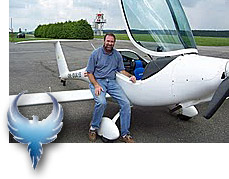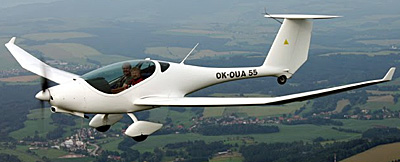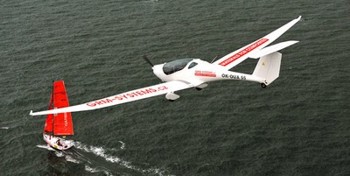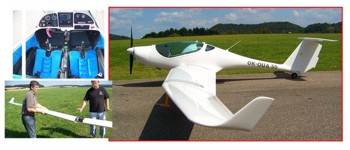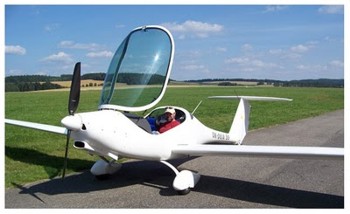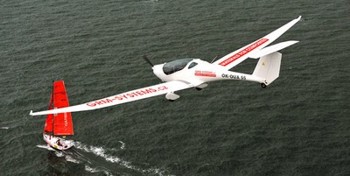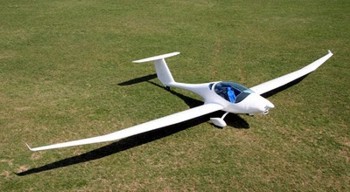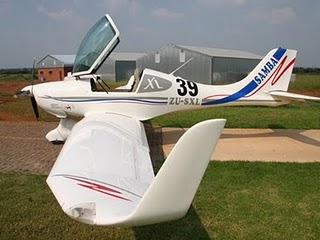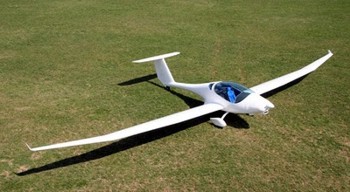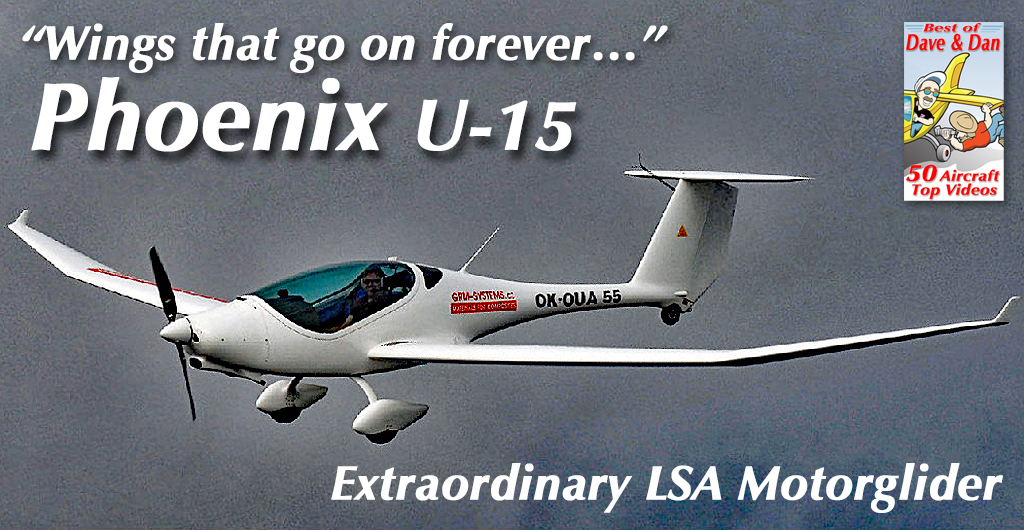
The Top 50 video series has gone over very well and continues with this post about the Phoenix LSA motorglider. If you thought it disappeared and were unhappy about that, have I got good news for you! I am aware of a very positive development regarding Phoenix that I am working to confirm. As soon as I have fuller details I will update this article but the prospects for LSA motorglider look promising. In North America, Phoenix Air USA is run by Ed Babovec (email) and he is excited about 2024. …more as it unfolds. Motorgliders as a subset of all aircraft enjoy some very special privileges that endear them to the recreational flying community. In particular, motorgliders do not require an aviation medical. That alone makes them desirable but long-gliding capabilities make them safer to some pilots and simply more enjoyable to others. Let’s look a little more deeply.


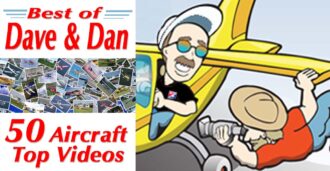
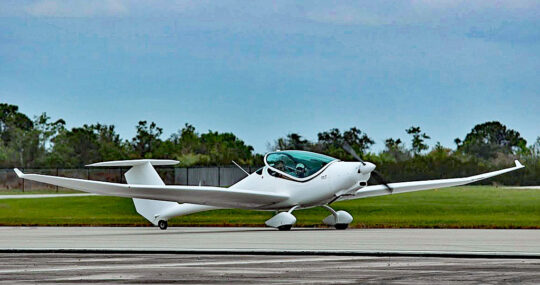
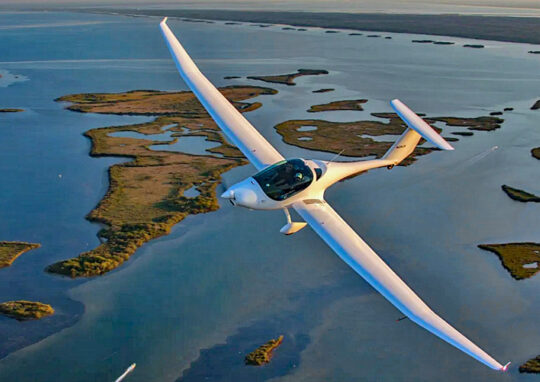 Despite a highly workable gasoline engine that many will prefer, the temptation of electric is especially strong with Phoenix.
Think about optimal benefits of electric propulsion.
I have long stated that Part 103 ultralights are already the first to be highly functional with electric propulsion, precisely because they are so light and their mission so modest. It's a simple formula: lighter weight = less batteries = less expense = a workable aircraft in 2024. That Part 103 ultralights aren't trying to travel long distances makes electric even more viable.
Despite a highly workable gasoline engine that many will prefer, the temptation of electric is especially strong with Phoenix.
Think about optimal benefits of electric propulsion.
I have long stated that Part 103 ultralights are already the first to be highly functional with electric propulsion, precisely because they are so light and their mission so modest. It's a simple formula: lighter weight = less batteries = less expense = a workable aircraft in 2024. That Part 103 ultralights aren't trying to travel long distances makes electric even more viable.
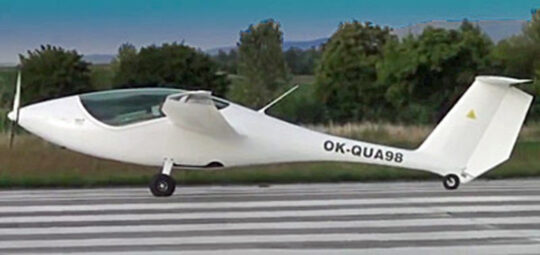
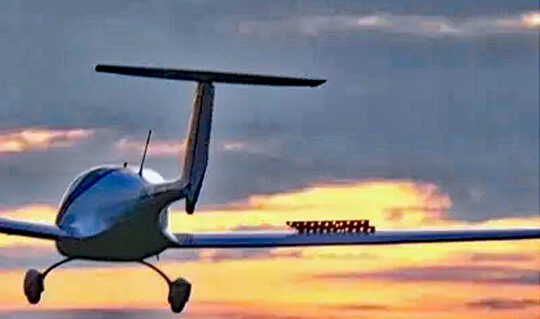
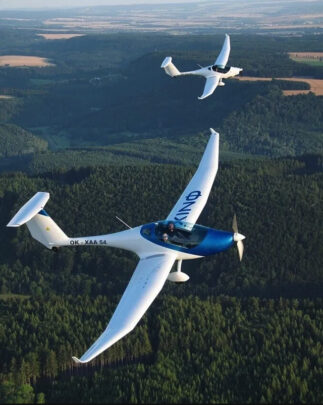 "The Phoenix motorglider is a taildragger with a twist. The tailwheel is controlled by the rudder pedals via cables to the rudder and steel rods connecting the rudder to the wheel. The tailwheel never “breaks free” or castors. Also, the main wheel disc brakes are controlled by a lever on the left control stick, which operates both main wheel brakes equally when used; no differential braking.
"Phoenix can be landed using the three-point or wheel landing. Wheel landings (landing on the mains and then holding the tailwheel off until speed is reduced) are easier and can be made with more precision than three-point landings but the three-point landing is critical when there is a crosswind blowing (because the tailwheel is on the ground and tracking can be controlled with the rudder pedals).
"The Phoenix motorglider is a taildragger with a twist. The tailwheel is controlled by the rudder pedals via cables to the rudder and steel rods connecting the rudder to the wheel. The tailwheel never “breaks free” or castors. Also, the main wheel disc brakes are controlled by a lever on the left control stick, which operates both main wheel brakes equally when used; no differential braking.
"Phoenix can be landed using the three-point or wheel landing. Wheel landings (landing on the mains and then holding the tailwheel off until speed is reduced) are easier and can be made with more precision than three-point landings but the three-point landing is critical when there is a crosswind blowing (because the tailwheel is on the ground and tracking can be controlled with the rudder pedals).
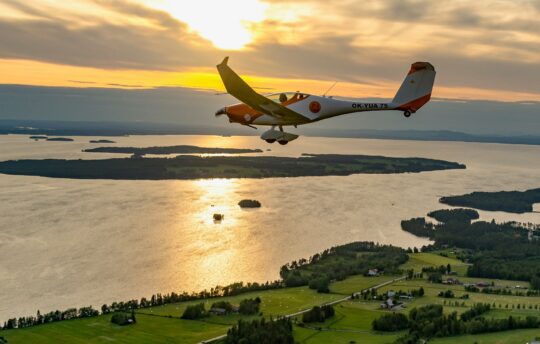 "The 15 meter (49 foot) wingtips give the Phoenix a 32:1 glide ratio, which means a lot of float or ground effect. Begin with the 11 meter (36 foot) wingtips that produce a 20:1 glide, which reduces ground effect and the amount of patience required by a learning pilot.
"When the spoilers are fully deployed after touchdown with the short tips, the plane remains planted on the ground with less chance of a bounce even if the plane touches down with extra energy.
"The 15 meter (49 foot) wingtips give the Phoenix a 32:1 glide ratio, which means a lot of float or ground effect. Begin with the 11 meter (36 foot) wingtips that produce a 20:1 glide, which reduces ground effect and the amount of patience required by a learning pilot.
"When the spoilers are fully deployed after touchdown with the short tips, the plane remains planted on the ground with less chance of a bounce even if the plane touches down with extra energy.
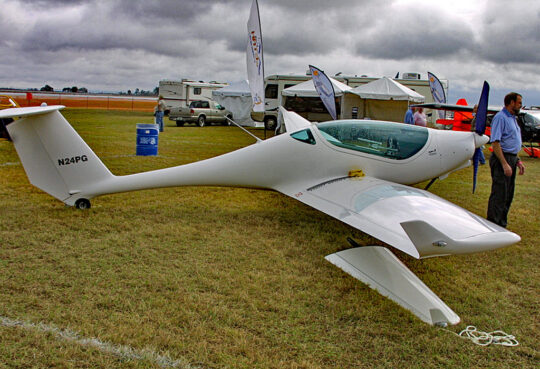
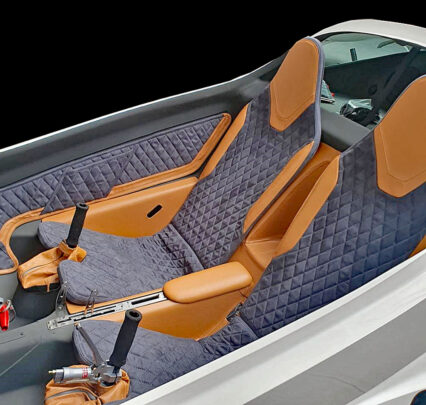 Once on the ground, they say to "keep about one pound of force on each rudder pedal to keep them aligned in the neutral position. Apply very light pressure to one side or the other for directional control. It only takes very small adjustments on the rudder pedals when the plane is rolling at 40 knots. Keep the spoilers full open until clear of the runway. When doing touch and goes, don’t be too quick to close the spoilers on the go or you may get airborne unexpectedly or lose control directionally as the tailwheel comes back off the ground. Slow way down to 20 knots or so before closing the spoilers and adding power for another take-off," finished the experts.
Once you feel entirely comfortable with landing one of these flat-gliding aircraft, you're ready to go up aloft and use that magic to your benefit. Think of it this way: A 15 meter (49 foot) wingspan Phoenix generates a 32-to-1 glide. That means if you are up only 2,000 feet above the surface, you can still glide more than 10 miles before you're on the ground.
Once on the ground, they say to "keep about one pound of force on each rudder pedal to keep them aligned in the neutral position. Apply very light pressure to one side or the other for directional control. It only takes very small adjustments on the rudder pedals when the plane is rolling at 40 knots. Keep the spoilers full open until clear of the runway. When doing touch and goes, don’t be too quick to close the spoilers on the go or you may get airborne unexpectedly or lose control directionally as the tailwheel comes back off the ground. Slow way down to 20 knots or so before closing the spoilers and adding power for another take-off," finished the experts.
Once you feel entirely comfortable with landing one of these flat-gliding aircraft, you're ready to go up aloft and use that magic to your benefit. Think of it this way: A 15 meter (49 foot) wingspan Phoenix generates a 32-to-1 glide. That means if you are up only 2,000 feet above the surface, you can still glide more than 10 miles before you're on the ground.
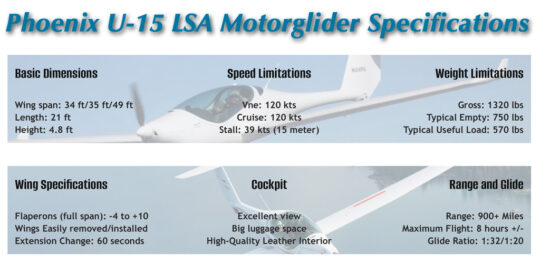 That's a safety margin every pilot can appreciate, even if you have to train a little bit to use it effectively.
That's a safety margin every pilot can appreciate, even if you have to train a little bit to use it effectively.
 With more 200,000 views, this 2011 video was and remains a hit. Please note this is a 13-year-old video in every way. I trust you understand technology was not then the quality we take for granted today.
https://youtu.be/F0jrEb70rj0?si=sSPS71KkQRxin72j
A couple years later, we did this update of an
With more 200,000 views, this 2011 video was and remains a hit. Please note this is a 13-year-old video in every way. I trust you understand technology was not then the quality we take for granted today.
https://youtu.be/F0jrEb70rj0?si=sSPS71KkQRxin72j
A couple years later, we did this update of an 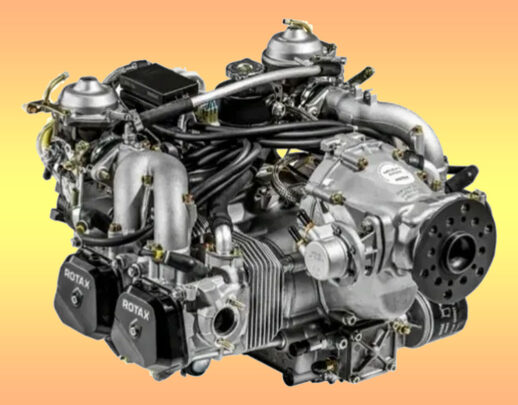
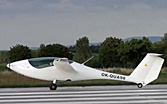

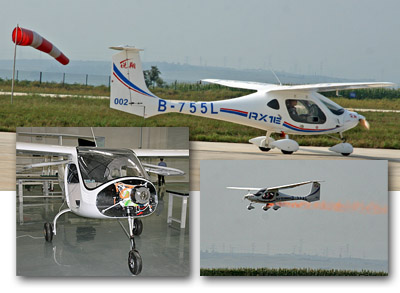 With
With 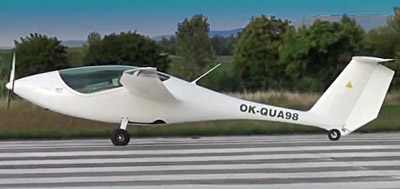 Some companies will not be attending not because their projects have stopped but because they are at critical junctions. Among those missing will be the Volocopter from e-Volo nor any man-carrying aircraft display by Yuneec — which last year showed their eSpyder that had just won German approval. However, the company will be present with their drone/UAV models and their electric powered skateboards, the latter seen at AirVenture 2013.
Martin Stepanek from the Czech company
Some companies will not be attending not because their projects have stopped but because they are at critical junctions. Among those missing will be the Volocopter from e-Volo nor any man-carrying aircraft display by Yuneec — which last year showed their eSpyder that had just won German approval. However, the company will be present with their drone/UAV models and their electric powered skateboards, the latter seen at AirVenture 2013.
Martin Stepanek from the Czech company 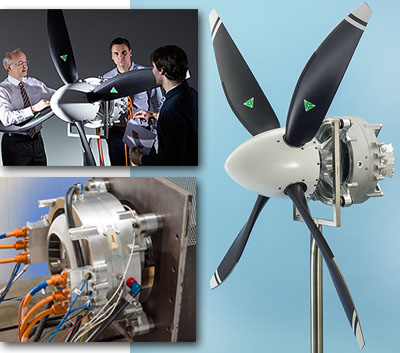 Willi wrote, "A newcomer at the e-flight-expo is Chip Erwin from Florida. His company
Willi wrote, "A newcomer at the e-flight-expo is Chip Erwin from Florida. His company 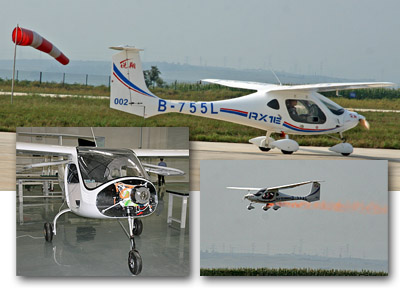

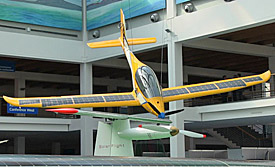
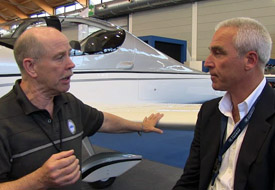
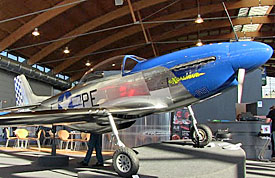
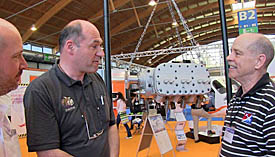

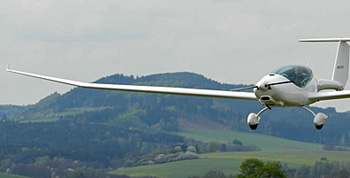
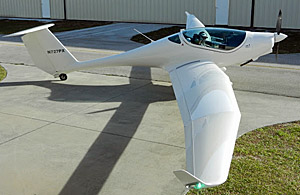
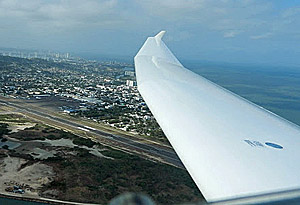
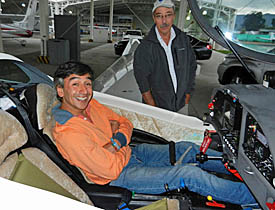
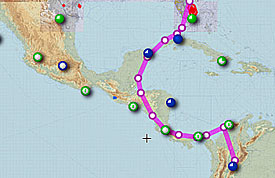
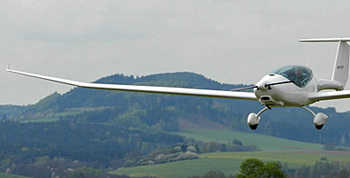
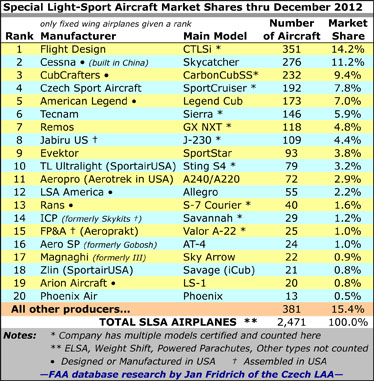 Our annual review of LSA Market Share brings our updated fleet chart and a second chart showing prior-year registrations. While sales of new SLSA remains below par, the market appears to be experiencing spotty but regular recovery from earlier low points. The first half the year foretold a better recovery but the last half of the year stalled somewhat. Regardless, based on traffic to this website, LSA interest is higher than ever. For January 2013, ByDanJohnson.com set all-time records in Unique Visitors and all other measuring criteria Thank you for your support!
2012 Market Share report — Nearby, we present our standard market share numbers. Our original chart remains consistent, illustrating the "installed base," or "fleet size." Because we know many of you seek recent-year information we are repeating the Calendar Year chart that debuted last year.
Our annual review of LSA Market Share brings our updated fleet chart and a second chart showing prior-year registrations. While sales of new SLSA remains below par, the market appears to be experiencing spotty but regular recovery from earlier low points. The first half the year foretold a better recovery but the last half of the year stalled somewhat. Regardless, based on traffic to this website, LSA interest is higher than ever. For January 2013, ByDanJohnson.com set all-time records in Unique Visitors and all other measuring criteria Thank you for your support!
2012 Market Share report — Nearby, we present our standard market share numbers. Our original chart remains consistent, illustrating the "installed base," or "fleet size." Because we know many of you seek recent-year information we are repeating the Calendar Year chart that debuted last year.
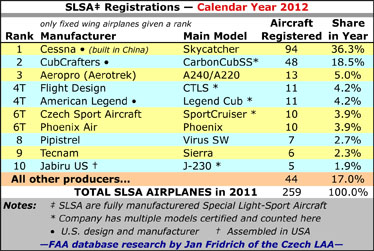 For the second year in a row
For the second year in a row 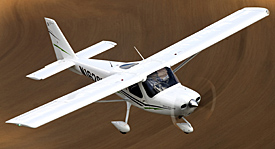 Perhaps the most noteworthy story in 2012 registrations is an even better performance by
Perhaps the most noteworthy story in 2012 registrations is an even better performance by 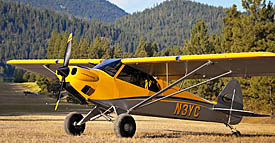 A remarkably steady climber is
A remarkably steady climber is 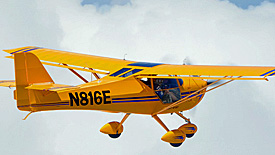 Other top guns in 2012 include perennial leaders like
Other top guns in 2012 include perennial leaders like 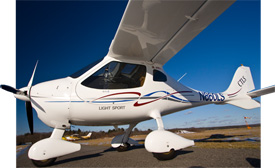 A member of the exclusive Over-100 Club listing only eight SLSA producers is
A member of the exclusive Over-100 Club listing only eight SLSA producers is 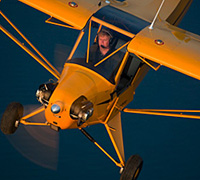 Unfortunately, one former high flyer, Remos, lost its U.S representative and has become very quiet though earlier this year, their CEO said they had recovered from the previous CEO's high-spending ways.
We are watching a few companies not on our fleet chart. One new entry to the SLSA scene is
Unfortunately, one former high flyer, Remos, lost its U.S representative and has become very quiet though earlier this year, their CEO said they had recovered from the previous CEO's high-spending ways.
We are watching a few companies not on our fleet chart. One new entry to the SLSA scene is 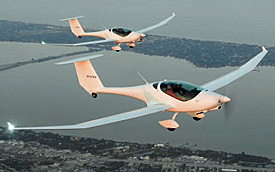 We are also watching the pulse on seaplanes lead this year by
We are also watching the pulse on seaplanes lead this year by 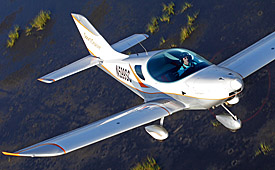 As I have said for years, a loud shout-out is owed to Jan Fridrich of the Czech LAA for the LSA Market Share report. Jan is also head of
As I have said for years, a loud shout-out is owed to Jan Fridrich of the Czech LAA for the LSA Market Share report. Jan is also head of 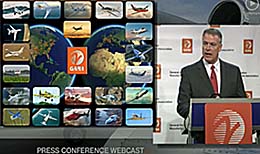 Notice: As always, we observe for you that all numbers here are derived from FAA's N-number registration database and are subject to data entry errors. Figures presented are not identical to sales recorded by the companies though over time the numbers draw closer.
UPDATE 2/13/13: GAMA held a press conference today where they released their industry numbers. Get more on GAMA
Notice: As always, we observe for you that all numbers here are derived from FAA's N-number registration database and are subject to data entry errors. Figures presented are not identical to sales recorded by the companies though over time the numbers draw closer.
UPDATE 2/13/13: GAMA held a press conference today where they released their industry numbers. Get more on GAMA 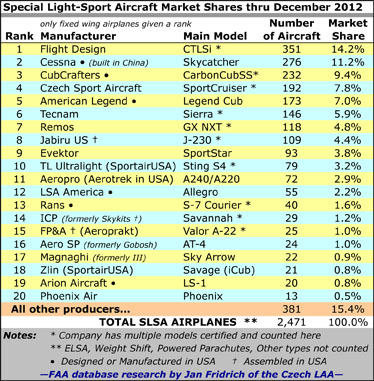
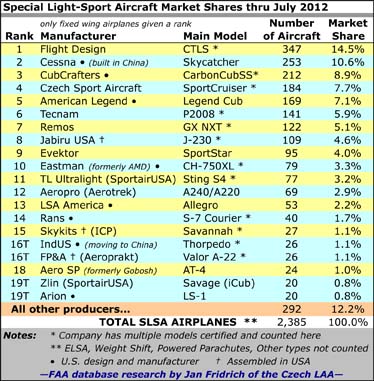
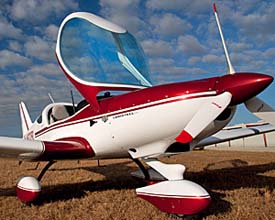
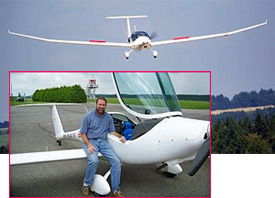
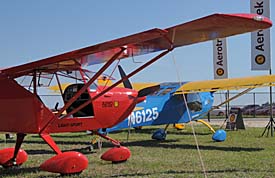
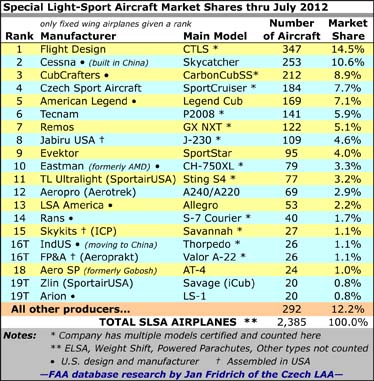
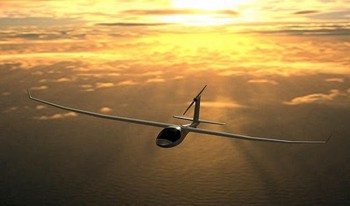
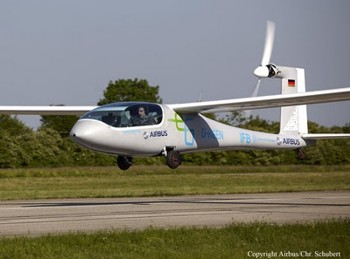
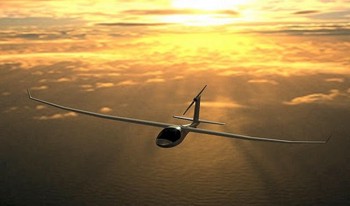
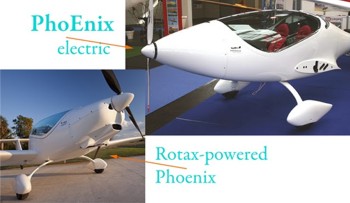 I've been having so much fun lately writing the electric flight article (now rescheduled to Aug. issue of Plane & Pilot) that it's bringing electrifying news from the universe to my email inbox.
Jim Lee, that hard working, happy-flying distributor for the
I've been having so much fun lately writing the electric flight article (now rescheduled to Aug. issue of Plane & Pilot) that it's bringing electrifying news from the universe to my email inbox.
Jim Lee, that hard working, happy-flying distributor for the 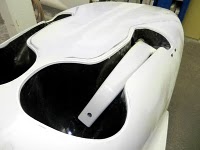 Here's some of what he had to say: "Reporting from the Czech Republic where I am spending 2 weeks assisting in the production of our new electric PhoEnix. The weather has been great... soaring 5.5 hours in the last two days... I see that your blog has sort of turned into an electric blog lately, so that gave me the idea to report to you first on our electric project. Orders for the Rotax Phoenix are pouring in, so we had better stop flying and start working."
Oh, for that challenge: to fly, or handle orders for your aircraft!
Here's some of what he had to say: "Reporting from the Czech Republic where I am spending 2 weeks assisting in the production of our new electric PhoEnix. The weather has been great... soaring 5.5 hours in the last two days... I see that your blog has sort of turned into an electric blog lately, so that gave me the idea to report to you first on our electric project. Orders for the Rotax Phoenix are pouring in, so we had better stop flying and start working."
Oh, for that challenge: to fly, or handle orders for your aircraft!
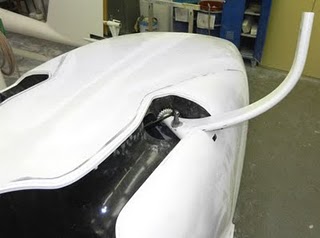 Here are excerpts from the blurb Jim sent:
Here are excerpts from the blurb Jim sent:
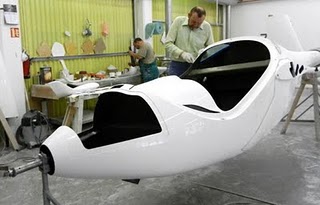 Location: • Sonoma Co. Airport, Santa Rosa, CA, and don't I wish I still lived in Santa Barbara so I could go! • Date: July 11-17, 2011.
The Kicker: Prize money is $1.65 million! The award is sponsored by NASA, which wisely realizes there are lots of innovations coming directly from grass roots aviation and it wants to cull the best.Some of the competitors:
Location: • Sonoma Co. Airport, Santa Rosa, CA, and don't I wish I still lived in Santa Barbara so I could go! • Date: July 11-17, 2011.
The Kicker: Prize money is $1.65 million! The award is sponsored by NASA, which wisely realizes there are lots of innovations coming directly from grass roots aviation and it wants to cull the best.Some of the competitors:
